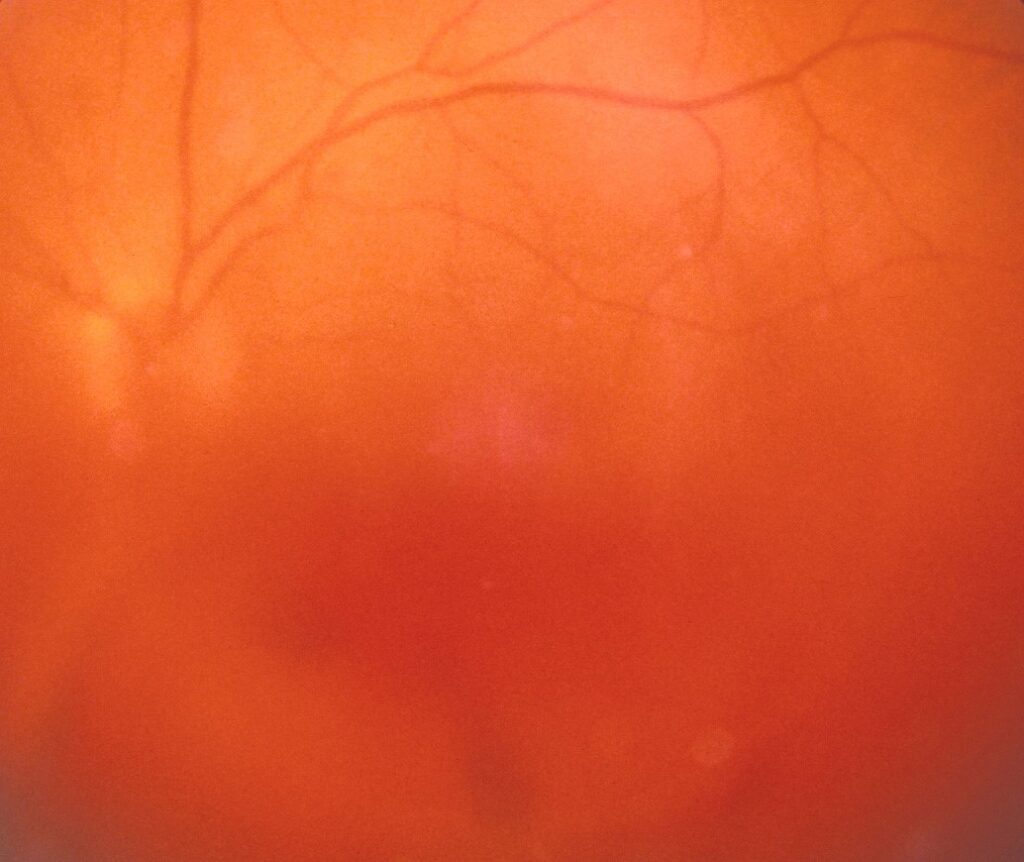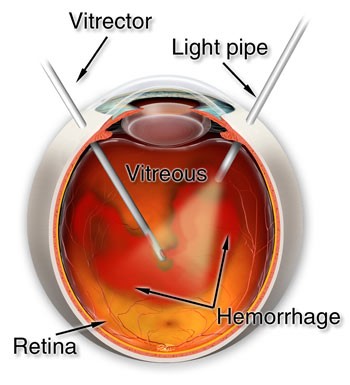The vitreous gel is usually clear, apart from occasional transparent floaters. Blood is not transparent, so if bleeding occurs into the vitreous then the vitreous gel loses some of its transparency, resulting in dense ‘floaters’ or loss of vision.

A vitreous haemorrhage obscuring the view of the retina.
A vitreous haemorrhage can occur for many reasons.
- Retinal tear or detachment
- An anomalous posterior vitreous detachment (PVD)
- Diabetic retinopathy
- Retinal vein occlusion
- Wet age-related macular degeneration
- Burst macroaneurysm
- Uveitis
When a vitreous haemorrhage has occurred, the most important thing is to discover the underlying cause for the haemorrhage. If it is caused by a retina tear for example, and this is detected straight away, laser or surgery can either prevent loss of vision or restore vision. Without urgent treatment the retina will detach and the eye can be permanently blinded.
If the haemorrhage is very dense, and the cause cannot be determined and treated during a clinic examination, then you will require a vitrectomy to clear the blood, make the diagnosis, and start treatment intraoperatively.

